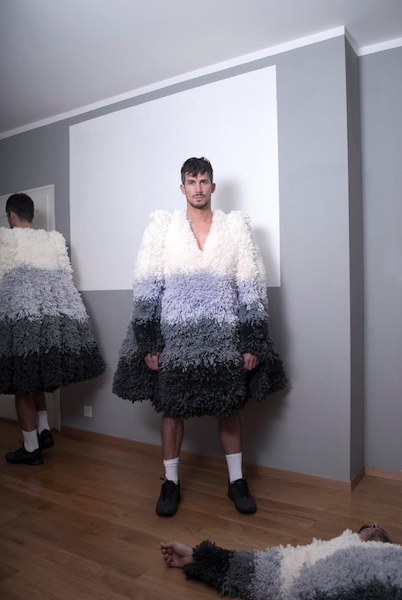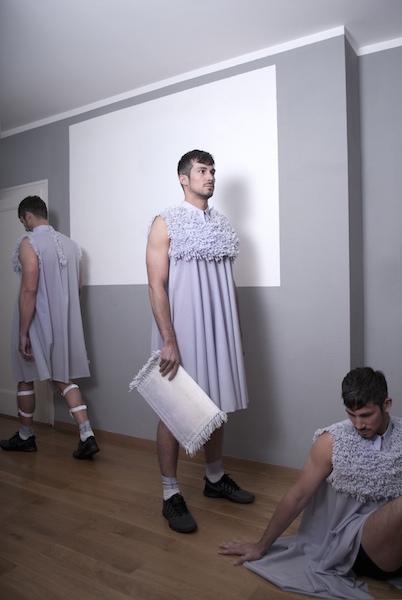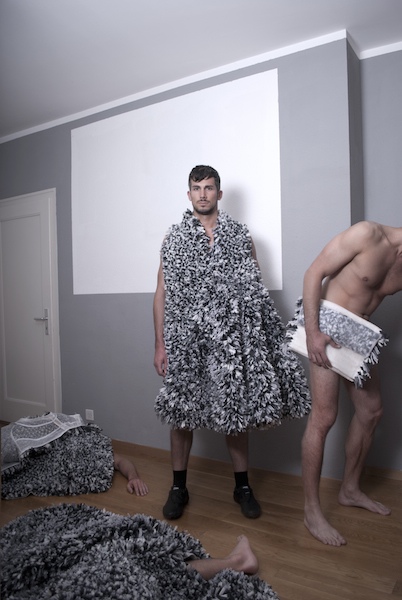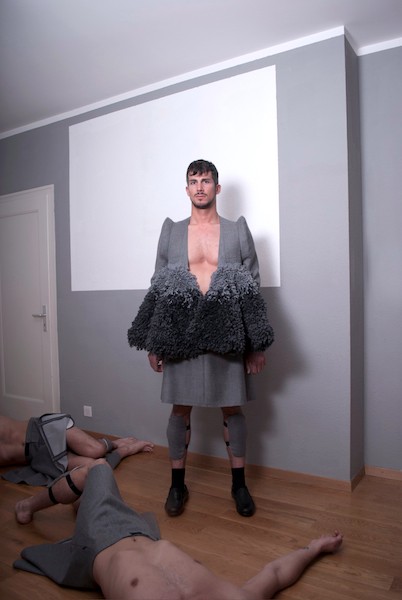With a Bachelor of the Arts in fashion design from HEAD Genève, Mikael Vilchez went on to work and live in Paris. His interest in the body, more specifically the feminine male, has been the source of inspiration for his latest collection. Mikael was hand-picked to showcase his work in the CH Talents: Visionaries exhibition taking place during LFW as part of the 2015 International Fashion Showcase.
Mikael, you used to express yourself through drawing on your own body – has the body always played an important part in your inspiration?
I think the body is the centre of fashion. To ignore it while building a garment doesn’t really interest me. It was exciting to build my collection on something else rather than a skinny young man’s body. I chose my model because he had something that I personally find very masculine, and this was important because of the feminine codes of the dresses.
You’re questioning gender roles and re-defining them with the feminine man, why is that?
I wouldn’t say that I imagined a feminine man, but feminine menswear; garments with feminine codes that are built on a masculine muscled man. The point was to find a way to assume feminine codes to define a different version of masculinity, to play with the androgyny of an outfit, and not of a body. At the end, the only fact to build the dresses on a man was enough to make the twist and make them look masculine.
How did you take the most pleasurable feminine aspects of your grandmother’s nightie and transition them into a men’s collection?
To feel my penis completely free under the dress was extremely nice. My arms also looked sexier than with a shirt or T-shirt. Those two elements were repeated on every look.
Why do you think you felt uncomfortable at first wearing a pink dress? Was it gender stereotypes and do you think they should be broken?
Before I saw myself in the mirror, I was afraid to look like a woman or to look ridiculous. I also felt uncomfortable because it was a very intimate dress that my grandmother used to wear on her naked body. It was kind of a violation of her intimacy.
How has HEAD helped change the way you look at fashion?
I decided to look less at fashion shows during my studies. School helped me develop my own universe and find inspiration in different things rather than actual fashion.
Fashion in London is very much influenced by nightlife, clubbing and streetwear. How is that different in Genève? What inspires fashion there?
I couldn’t say that there’s a real fashion style in Geneva. I would say that people are very influenced by Parisian elegance mixed with the no-fashion style of German or Swiss people. But at the end of the day, that can also be very inspiring.
Why did you choose to study fashion?
I chose fashion because it’s a mix of different creative ways of expression. It allows me to make products but also communicate through photography, video, installation or mise en scène. It’s the most global way to express my universe.
How would you define beauty?
What a weird question?
Still or sparkling?
I hate sparkling water (laughs).
Interview by: Misha Skelly
CH Talents: Visionaries
Emerging Swiss Fashion Design
20-24 February 2015
Display Gallery
26 Holborn Viaduct
London
EC1A 2AT











